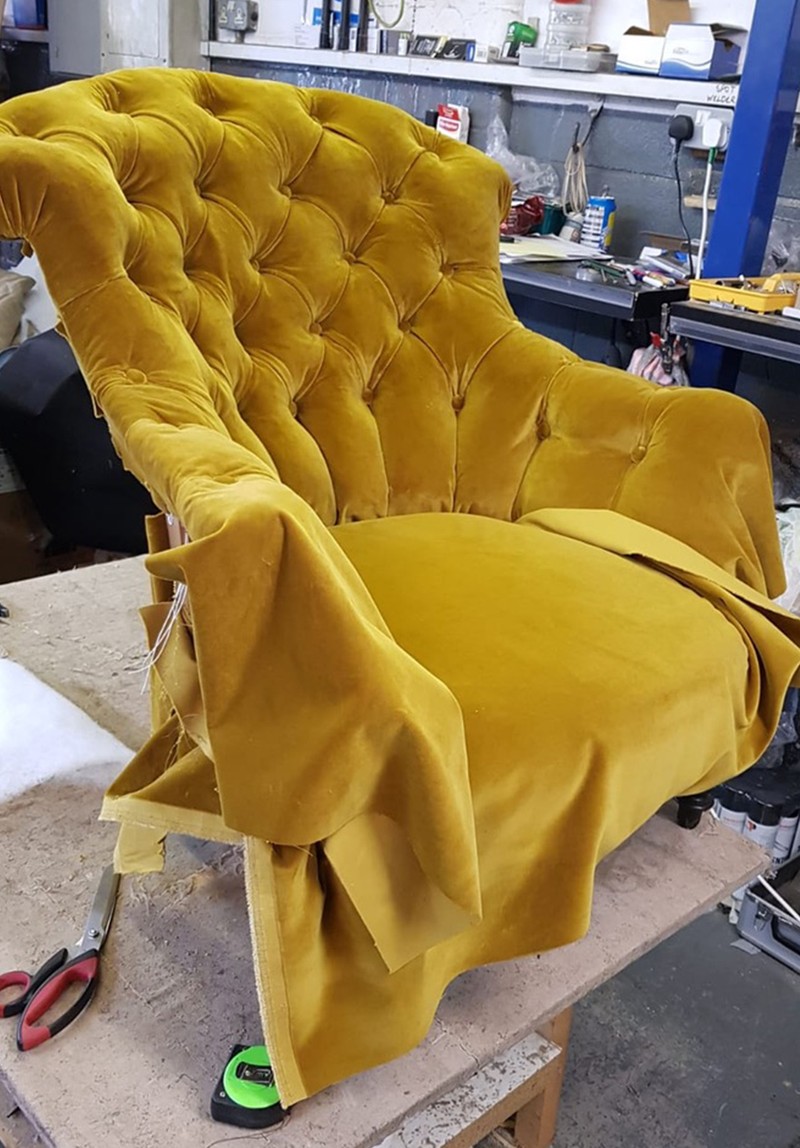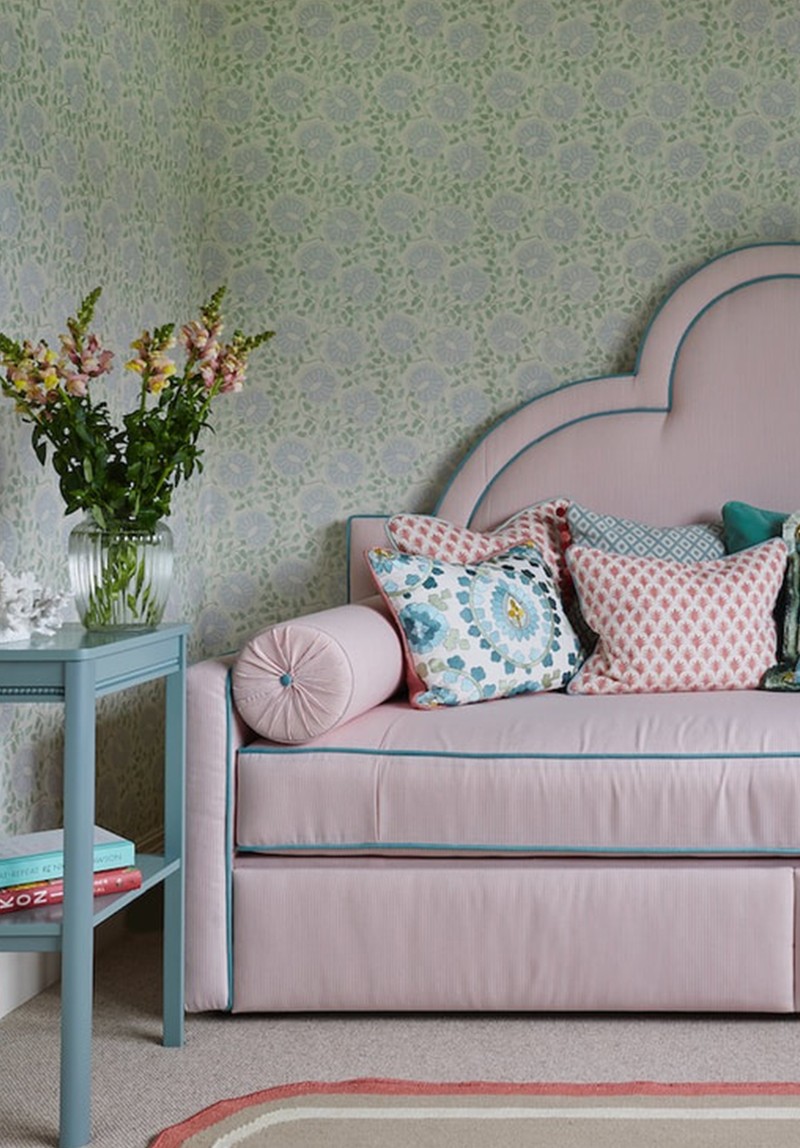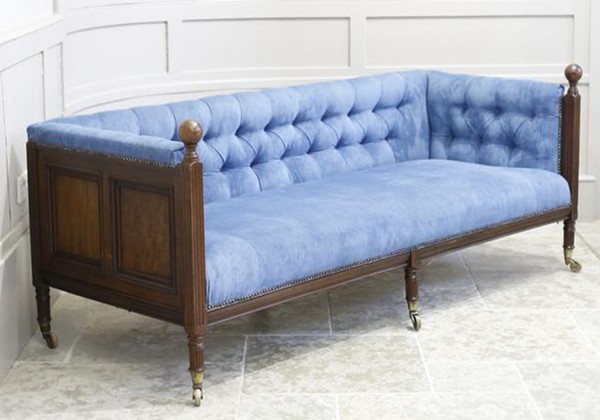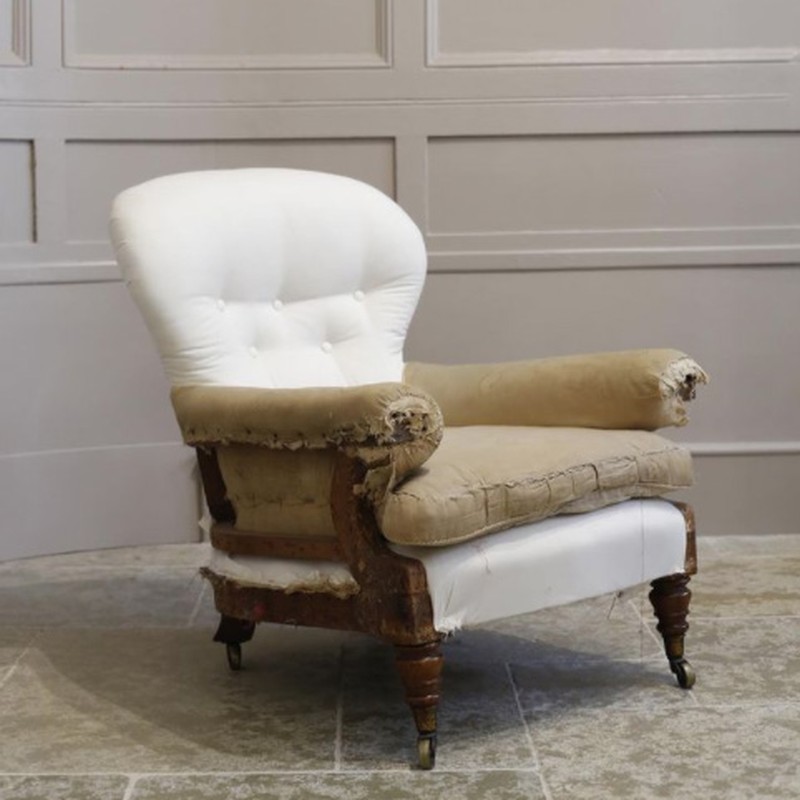
What You Need To Know About Getting Furniture Reupholstered
Assess Your Item
Choosing to reupholster furniture is not a quick-fix – nor is it always a more affordable option. “Traditional upholstery is a real skill, so it shouldn't be seen as a cheap, quick fix for an old chair; think of it more like a bespoke service that breathes life back into older pieces and treasured heirlooms,” says Matt Dixon of Tallboy Interiors.
First, assess your item of furniture and its condition. Antiques are typically more than 100-years-old so, naturally, there can be issues. “Generally, antiques have good quality, solid, hardwood frames but one that’s rotten or water damaged can’t be repaired,” says Sumeya Amin of Recoire. “We wouldn’t recommend re-upholstering high-street brand sofas, either, as the frames aren’t usually high enough quality.”
“Chairs, sofas or ottomans, for example, might need to be re-glued, tightened up, and the legs properly repaired so the item is as good as it can be, before you start re-upholstering,” says Matt. If you already own something or you’re at an antiques market looking to purchase one, take note of what needs to be done. To check if the piece is in good enough nick, move it around. “If the arms on a chair move, then the joints and dowels aren’t right – beware, as they can be a big job to fix,” says Matt. “Then check the legs by putting it on its back. If they have movement then that could be an issue, too.”
Next, check the springs and padding on a chair or sofa. It may be intact, but it’s worth getting the springs re-banded to protect the integrity of the seat for years to come. “The chairs we buy at TallBoy Interiors are all antique, so we make sure their seats are supportive before we sell or reupholster them. Even once a chair has been fully upholstered, should something happen to the seat (like the webbing breaking), we would actually reband it without affecting the upholstery. This usually costs about £50, and saves the chair from being thrown out.” However, if the springs have fallen out of the base, it will likely need hand tying and re-banding, which is typically a bigger task.
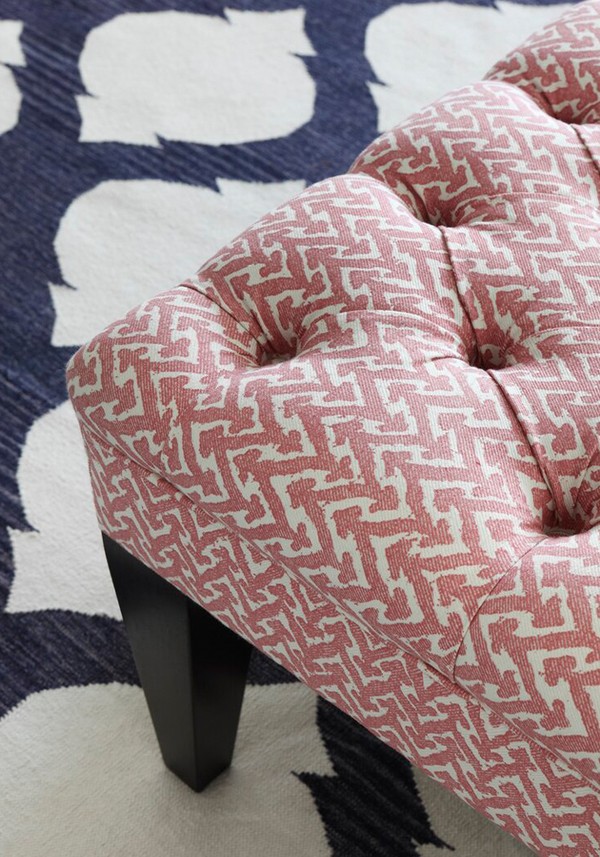
Check The Padding
The traditional filling for an antique chair or sofa is usually horsehair, which is still widely used today. “You get that distinctive ‘horsehair crunch’ when you touch it,” explains Matt. But there are some good, modern alternatives around now, too. “Coconut hair is half the price and feels similar, and there’s rubberised horsehair, too, which is best-suited to commercial projects. All these options are well priced and give people more choice.”
An ottoman or footstool will use foam padding, too. "Top-grade blue foam padding is dense enough for seating, such as ottomans, as well as headboards," explains Sophie Carmichael from Atelier SKC. "Then, layer cotton felt followed by a fire retardant fabric, which is quite firm. That'll ensure the final layer of top fabric sits nicely."
Consider Buttoning
It’s worth noting any item can be buttoned, even if it wasn’t before, and it can also be removed where it previously existed. However, Matt’s advice is to try and stay true to the original features of a piece, where possible. “If the original item has buttons, then you can see what that would look like and why it was applied in the first place.”
The original technique is known as ‘deep buttoning’, which is tied into the body of the piece. Some upholsterers, however, use false buttoning as an alternative. Choosing to go plain or for buttons will impact how much fabric you need, and therefore the final cost –for example, an average antique chair will require around 4m of fabric if plain, but 5m if it’s buttoned. It can also be very time-consuming. Sophie explains: "It often takes four times longer to deep button a headboard than to make a plain one, for example." With that in mind, be sure to factor in the fabric cost and labour time when considering this technique.
Understand Fabric Weights
As well as affecting the final price, your choice of fabric should be fit for purpose. It’s therefore vital to check its Martindale Rub Test rating – a measurement of durability according to the amount of times sandpaper or wool can oscillate across the fabric before it starts to show signs of wear or distress. The higher the score, the more durable it is. For a chair or sofa, a score of anything under 20,000 is not fit for purpose, as it’s too thin and lightweight. "A cotton mix is an upholsterer's dream," says Sophie. "It has a nice stretch." Meanwhile, Matt says: "Warwick Fabrics have a good variety of price points and designs, while Rapture & Wright is my personal go-to for beautiful handprinted fabric crafted using traditional techniques."
Select Patterns Carefully
There is such a thing as the right fabric for the right chair. For instance, striped fabric looks better on a plain chair, while plain fabric works well on a deep buttoned chair – especially in velvet. “It’s best to avoid lines on a buttoned chair but you can get away with patterns,” says Matt. “Different fabric finishes offer different looks, so it depends on the style you’re after – a mohair and a heavyweight linen could both work, it just depends on what you want.” Finally, if you're going for a pattern, consider how it repeats, especially on something with a larger expanse like an ottoman. You may need to buy extra fabric to get the right pattern to drop in the right place.
Think About The Finishing Touches
Put simply, piping creates a neat edge on any kind of reupholstery. Just bear in mind that if you’re using bold, patterned fabrics, it’s best to keep feature details to a minimum as often they disappear into the chair or take the focus away from the print. Traditional fabrics, such as Regency stripes or French natural silks, work well with studs, too. “You can sew on a trim too, but I’d always opt for piping over that, personally,” says Matt.
There are some cost-cutting ways to finish off your items – such as strip-on studs (one in five nails is actually hammered into the frame) or a glue-on braid. But these cost saving methods – although great in the short-term – may prove to be a false economy on a piece otherwise designed to last for decades.
Know The Trends
There are some new and exciting techniques being used in the industry these days. “The deconstructed manner is where part of the chair, usually the back, is left exposed,” says Matt. “It shows off the craftsmanship of the frame, as well as the work that’s gone into it.”
Sheep fleeces is another trend made popular by Timothy Oulton. “We use a really tight curly wool with a great texture and feel. We use individual hides, too, which takes real skill to make and creates beautiful lines. It will give a piece that Scandi, natural look.” The traditional English theme continues to be popular, adds Sophie. "I'm getting lots of requests for Liberty prints, bird themes and people aren't afraid to use colour – that's definitely coming back."
Get The Bottom Line
As a mid-price upholsterer Matt at Tallboy Interiors charges £450 plus VAT and fabric costs for an average buttoned chair. However, the condition of the piece and therefore the work required means this can vary.
For more information and advice on upholstery visit TallBoyInteriors.co.uk, Recoire.com and TimothyOulton.com.
DISCLAIMER: We endeavour to always credit the correct original source of every image we use. If you think a credit may be incorrect, please contact us at info@sheerluxe.com.
